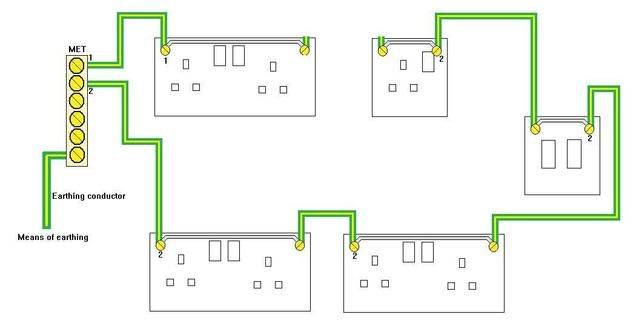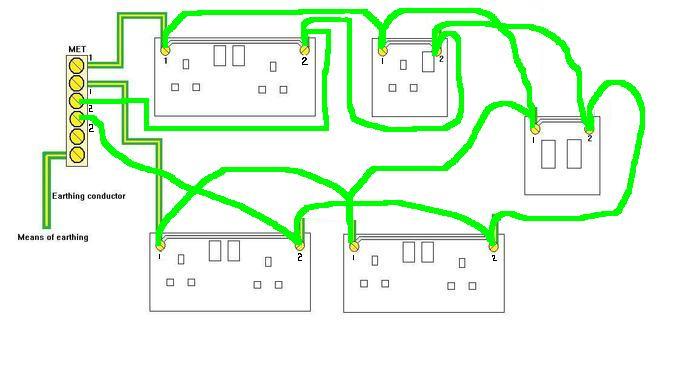It might do. It says it's the diagram of a ring final, so if that cpc is at least 10mm², or 4mm² with additional mechanical protection then it would comply with 543.7.1.3 (i) or (ii).ok, writing aside, the diagram in the photo above shows a high integrity earth..
If it doesn't comply with 543.7.1.3 (i) or (ii) then it is not a high integrity earth for it clearly does not comply with 543.7.1.3 (iii) or (iv) or (v).
But they are not.if the sockets were part of a radial then the last socket is connected back to the earth bar... yes?
If there is only one ring, it only qualifies as a high-integrity cpc if it's at least 10mm², or 4mm² with additional mechanical protection.so by it's very nature of already having the earth at the last socket connected back to the earth bar, a ring also has a high integrity earth
The 1.5mm² issue can't be left aside - it's fundamental to this whole problem, because if you only have one cpc ring it can't be 1.5mm².( assuming that the earths are in seperate terminals at the socket and board, and leaving the 1.5mm cpc in T+E issue asside since I don't do domestic and generally wire in singles.. )
No you don't.which is exactly what you have in a ring if you use the dual earth terminal sockets and terminate one cpc into each terminal.. if you take one out, you still have the other..
You don't have two rings to start with, you only have one, so if you break it you then have no ring cpcs.
1) For a ring final the cpc must also be a ring.
2) Unless oversized you need two separate ring cpcs.
No - I never said you had two cpcs at each socket - if you undo a connection as you suggested then each socket only has one path back to earth. The circuit has 2 cpcs, each one is a radial serving only some of the sockets. So no longer compliant as the cpc for a ring final.you yourself above have agreed with my statement that you have 2 cpc's at each socket.. but then insist on adding "neither of which is a ring".
No, because with the radial circuit you only have a single cpc. In the form of a ring.do you then terminate the additional earth from the end of a radial into each and every socket on it's path back to the board?
You would if Iso if I looked in the back of any of your sockets that you have wired to have high integrity earth, I would see 4 earth wires, 2 into each earth terminal?
a) were to wire one
b) were to choose not to use a cpc of at least 10mm², or 4mm² with additional mechanical protection
because that is what the regulations say you must do.
543.7.1.3 (iii) two separate protective conductors, distinct from each other, each one of which is a ring.



